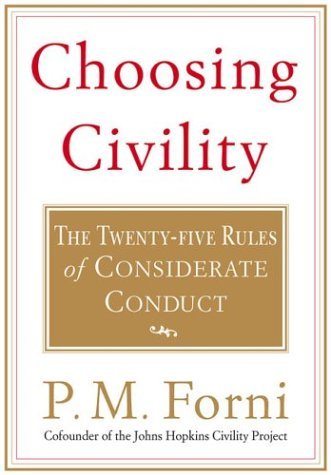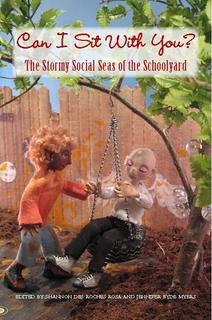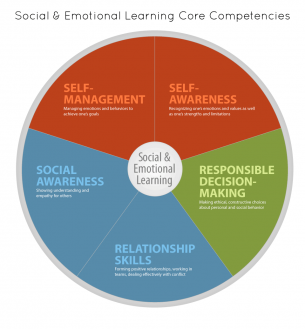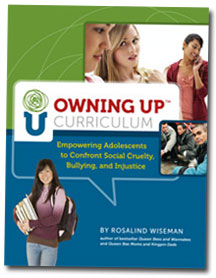 Sept. 6, 2011 As school starts this week for the very few left that haven’t had summer short-circuited with August start dates, we’re continuing our focus on solutions-based media to ramp up Social and Emotional Learning (SEL) and digital citizenship in an effort to not just squash ‘bullying’ but PREVENT it.
Sept. 6, 2011 As school starts this week for the very few left that haven’t had summer short-circuited with August start dates, we’re continuing our focus on solutions-based media to ramp up Social and Emotional Learning (SEL) and digital citizenship in an effort to not just squash ‘bullying’ but PREVENT it.
Whether it’s an entirely new school experience or just curbing first day butterflies, childhood angst can reach a fevered pitch when lunch table environments leave some children in tummy turning terror in hopes of being ‘accepted.’ Layer in bullying and the special needs child with autism or ADHD life lessons, or a gender/sexuality issue of acceptance (great new Trevor Project outreach for Suicide Prevention Week on Friday called TalkToMe.org) and “Can I Sit With You?” packs a powerful punch.
Those 5 words, a handful of syllables, can mean the difference between an open palmed welcome and a stinging bracer. One peek at the poignant schoolyard reveries shared as a living book on the Can I Sit With You.org site will remind why it’s so important to get to some of the roots rather than just clip off the stem of the bullying weed, while providing youth preventive inoculation and healthy responses for resilience.
Granted, there’s no magic ‘app’ to teach empathy and kindness, but there are new media companies like Electric Eggplant creating digital stories to work toward instilling social emotional learning (SEL) early and often.
Annie Fox’ new Are You My Friend (which just premiered on iBooks for ages 4-8) and Be Confident in Who You Are: Middle School Confidential graphic novel (an anti-bullying series now on the iPad) begin to lay the groundwork for digital citizenship by taking a holistic approach at increasingly early ages to seed social emotional learning through interactive play. (full feature forthcoming on same)
Annie Fox’ hour long podcast featuring Rosalind Wiseman “Queen Bees Go Hi-Tech” is all about kids figuring out who’s a friend worth keeping and who’s not, as she helps them navigate their worlds to create cultures of dignity. (imperative cherry-picking as kids enter the school sphere)
Edutopia offers a great list of resources in “How to use social emotional learning to stop bullying” and safety expert Anne Collier chatted with me on the phone today adding a few more excellent programs like Roots of Empathy.org or Sources Of Strength.org.
 I’m adding The Respect Institute.org for their amazing boundary setting programs of compassion and self-worth, since so much of bullying circles back into cyclebreaking and the need for healthy self-respect in the first place.
I’m adding The Respect Institute.org for their amazing boundary setting programs of compassion and self-worth, since so much of bullying circles back into cyclebreaking and the need for healthy self-respect in the first place.
With so many new “mandated” anti-bullying programs popping up like dandelions, (some with counter-productive levels of ineffectiveness, here’s Rosalind Wiseman’s great post on good and bad bullying PSAs and selecting tools for schools accordingly) I think it’s really important to recognize that well-meaning “systems” don’t do much good without social emotional learning from the get go.
All too often media deals in ‘absolutes’ either ramped and amped with digital drama or flinging harsh punitive terms like ‘zero tolerance’ with stomp it out style rhetoric that is often more intimidation than substantive in making actual behavior change stick.
Our own child dev media pundit Dr. Robyn Silverman spoke with Fox news on the pros and cons of this week’s new Sept 1, 2011 tough legislation in her NJ district which is truly an eyebrow raiser for those of us in the social media mix concerned about heavy-handed ‘one size fits all’ law enforcement infiltration into the kids’ sphere which could result in some disconcerting sidewinders with rapsheets for life.
 When asked about whether ‘cyberbullying laws’ like these were effective, respected social media safety guru Anne Collier spoke in medical metaphors drawing upon the Socratic oath to ‘Do No Harm’ and reiterating the need to view bullying behavior in totality.
When asked about whether ‘cyberbullying laws’ like these were effective, respected social media safety guru Anne Collier spoke in medical metaphors drawing upon the Socratic oath to ‘Do No Harm’ and reiterating the need to view bullying behavior in totality.
Anne Collier summed, “Each state law seems to be handled differently so effectiveness depends…The ones that treat the symptoms and not the problem is like a health diagnosis that doesn’t assess the whole patient…School officials need to treat each case with a whole school response, a holistic mindset. The psychosocial makeup, context, and risk taking behaviors are not to be ignored.”
Of course, with various states enacting new anti-bullying laws all I can think of is educrats bumping heads with educators, parents, students and law enforcement in a moshpit of a mess.
 All the more reason I’ll continue to mention Johns Hopkins Prof P.M. Forni’s Choosing Civility: 25 Rules of Considerate Conduct book and site as a resource since it seems ADULTS are in equal need of education when it comes to how to walk through the world.
All the more reason I’ll continue to mention Johns Hopkins Prof P.M. Forni’s Choosing Civility: 25 Rules of Considerate Conduct book and site as a resource since it seems ADULTS are in equal need of education when it comes to how to walk through the world.
Media wise, our culture has become so coarse and crass with bullying cues sent to kids for high stakes drama and rude, unspeakable sound bites translating to social norming that goes far beyond any ‘lunch table’ slam.
I recently re-read Prof. Forni’s aligned book The Civility Solution What to do When People Are Rude” since I’ve been blindsided by some unlikely adults, including educators, parents on the sidelines of athletic events, and coaches that run down kids for sport making it very difficult to respond coherently.
When a child mentions schoolyard dialog that sounds almost surreal, or reveals an eyebrow raising text message and asks, “ok, so what would you say to THIS?” I want to be able to apply calm, social emotional learning rather than have analysis paralysis with stunned, kneejerk reactions to blunt, crude one-liners, thinking “wth? did they really just say that? Yougawdabekiddinme”
More often than not I end up head-shaking ‘I have no response for that’ with awe-struck incredulity. So clearly, I have work to do too.
Throughout the week I’ll be adding back to school resources and interviews to ease transitions, whether it’s finding a spot at the lunch table or extracting from toxic ones, as this First Day Back to School video from youth kingpin Michael Buckley of ‘What the Buck’ YouTube fame reminds, “Do not get stuck with a group of people you really don’t like” (out of fear/familiarity remaining with the same group for the first couple of weeks, because then whammo, a year goes by and you’re still with the same unkind kids) “You don’t have to be best friends with everybody, you just need to be friendly…big difference”
 Meanwhile, good luck with new schools, first days and navigating the ‘stormy seas of the social schoolyard’…
Meanwhile, good luck with new schools, first days and navigating the ‘stormy seas of the social schoolyard’…
As I work on our own M-power/hands-on media literacy games riffing off of Survivor: (The Lunch Table Edition) I keep trying to find healthy ways to counteract relational aggression, know it when you see it coming your way (thanks, Rachel Simmons, for red flags in Back to School tech rules) and call upon coping skills and resiliency to ensure even if youth ARE ‘voted off the island’ in a lousy reality TV meets real life pain moment, they’ll have the social emotional learning to handle it with aplomb.
The one thing I’m definitely finding in our “outcomes and measures” (research-speak for testing what works/what doesn’t) is you can open the dialog in multiple ways, but each unique individual has their own triggers, motivations, and ‘SEL landscape’…One size does NOT fit all.
Related Reading:
What IS “Social Emotional Learning” (SEL)
(Per CASEL: Collaborative for Academic, Social Emotional Learning)
How can we use SEL to help our children? (NYU Child Study Ctr)
SEL & Prevention: Why It Matters! (meta-analysis of 213 eval studies of SEL programs)
Great Edutopia Link List on SEL for prevention of bullying
Michael Pritchard’s Video, Lessons from the heart (love his work)
Lessons on Understanding Emotions: RULER acronym R-recognizing U-understanding L-labeling E-expressing R-regulating (emotions)
‘How to greet people’ media moments (minus the fat-shaming rhetoric, Michael Buck has some hilariously basic but wise conversational tips for kids who may need a relationship primer on how to engage at the lunch table, particularly those bridging into middle school, HS etc., thanks Derek Baird!)
Anti-Bullying Acronyms:
Per Rosalind Wiseman’s Excellent “Owning Up” Curriculum
Clicks & Cliques: Meaty Advice for Parents on Cyberbullying
Clicks & Cliques Pt2 Whole School Response is Key
SEAL: Transcribed from Annie Fox’ podcast, by Anne Collier in NFNews: S-E-A-L —As you sit down with your child, “say, ‘I’m going to give you a structure that’s going to help you think through the really bad feelings in your stomach and put them into words for yourself before you go and talk to someone else,'” Wiseman says, “‘because how many times have you had the experience where you’re really, really mad at somebody and know exactly what you’re going to say to the person, and then you get in front of the person and you totally lose your words? This is going to be a way for you to have a better chance of that not happening, so you can be calm and have as much control as possible in the situation.'”
S-E-A-L: (SEAL Steps) by Rosalind Wiseman)
S= Stop
E= Explain
A= Affirm/Acknowledge
L= Lock
As transcribed by Anne Collier in NFNews:
- S means you “stop and think when and where, now or later, publicly or privately” you will confront the person face-to-face (usually pretty short in public, longer in private).
- I think it’s important to note, here, that Wiseman’s saying the young person is doing this neither to be the bully’s best friend nor to destroy somebody. “It’s not a zero-sum game.”
- E is about how “you explain exactly what you don’t like and exactly what you want.” Not something vague like, “you’re being mean to me,” but “when you stole my password, you know I’ve had the same one since 6th grade and you used it to send an embarrassing message to my entire contact list making it look as if it was me. I hate that; it was beyond embarrassing to me.” Then the teen explains exactly what she wants, regardless of whether or not the kid is likely to do it, something like: “I’m asking you to send a message to all those people saying you sent that other message, that it wasn’t me. I’m going to be sending that message to everybody, but I’m asking you to have the courage and integrity to do it yourself.” Wiseman explains that, in this confrontation, the targeted child is not asking to be treated with dignity, is not appealing to the bully’s sympathy. She is being clear that dignity “is something I deserve because it’s what everybody deserves.”
- A is really two As – for “affirm” and “acknowledge or admit (“some kids like ‘acknowledge,’ some ‘admit'”). They’re about rights and responsibilities. “The first A is to affirm your right and everybody’s right to walk down the school hallway or be in this world without being treated like dirt.” As for responsibilities, this parent-child conversation is providing your child some space in which she can ask herself, ‘Is it possible that I contributed in some way to the dynamic that I’m now dealing with? What are my responsibilities to other people and have I respected those responsibilities?” Wiseman adds that this is sometimes the hard part for parents – asking their own child about her role in the situation, but it’s essential, she says, if we want our kids to have the ability to put on the brakes the next time it happens. She feels this is particularly important with today’s technologies because these days it’s almost impossible not to have a role, not to be either target, perpetrator or bystander (see this Slate piece by Yale psychology professor Alan Kazdin about the power of the bystander). Cyberbullying situations are very fluid, usually hardwired to the school context, with bullies, victims, and bystanders frequently swapping hats in a 24-7, digitally-enabled school drama that makes it hard to get away and get perspective (see this).
- L is “You either lock in or lock out the relationship or friendship with the person you confronted – or you take a vacation from it. With peers, you need to be able to go through the process of asking whether you want to be in this relationship or not and how you want to be in it. As a bystander, you can say to the bully I’m coming to you as a friend (lock in); it would’ve been easier to say nothing, but I’m saying this to you out of loyalty; as a friend I’m coming to you. To a bully, you might say, ‘You’ve changed, you’re blowing me off all the time, bossing me around, ridiculing me, whatever, and it’s not getting better, so I need to lock out the friendship or I need to take a break.’ [Wiseman reminds always to encourage them to put it in their own words. They just need this structure because this is very difficult to do.]











My mother-in-law is about to move into a new living situation, a retirement community, and what’s been on my mind is how hard it will probably be for her to go into that giant dining room and see a seat and ask “Can I sit with you?” Fortunately we have some friends there who have already promised to make sure mom is welcomed at a few tables without having to ask!
The lunchroom was always one of my hardest places as a youngster. By middle-school I avoided it completely. I truly wish there had been resources out there for me, my parents, the teachers, AND the kids who did the bullying like there are now.
Thanks, Amy, for putting this together and doing other “back to school” helpers in the coming days and weeks.
Az Újra Tanulok TÁMOP-2.1.6-12/1 projekt keretében támogatásban részesülhetnek azok a tankötelezettségüket teljesített, de a rájuk irányadó öregségi nyugdíjkorhatárt be nem töltött személyek – foglalkoztatási helyzetüktől függetlenül – akik az alábbi kimenetű képzésekben való részvételt vállalják.